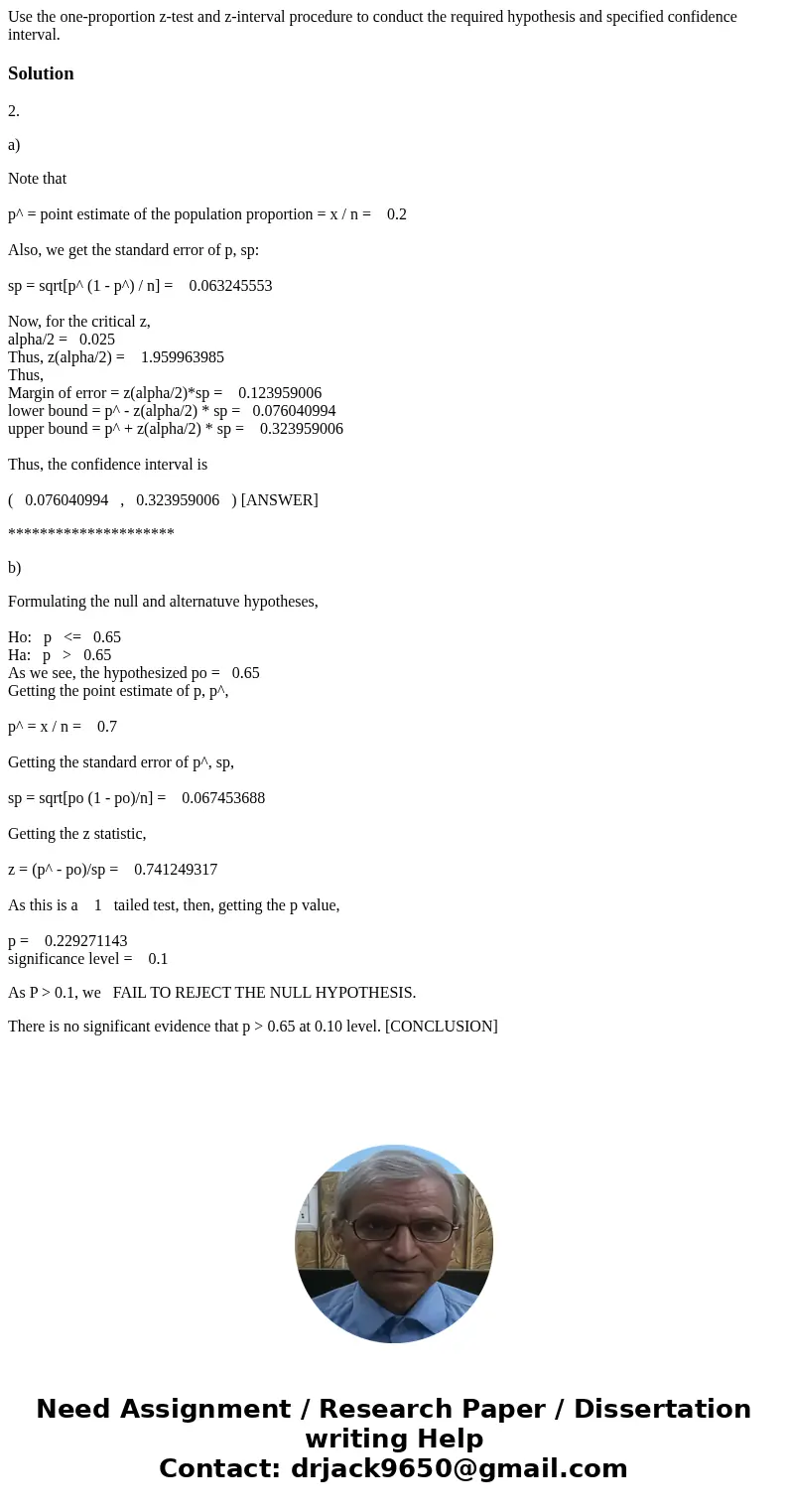Use the oneproportion ztest and zinterval procedure to condu
Solution
2.
a)
Note that
p^ = point estimate of the population proportion = x / n = 0.2
Also, we get the standard error of p, sp:
sp = sqrt[p^ (1 - p^) / n] = 0.063245553
Now, for the critical z,
alpha/2 = 0.025
Thus, z(alpha/2) = 1.959963985
Thus,
Margin of error = z(alpha/2)*sp = 0.123959006
lower bound = p^ - z(alpha/2) * sp = 0.076040994
upper bound = p^ + z(alpha/2) * sp = 0.323959006
Thus, the confidence interval is
( 0.076040994 , 0.323959006 ) [ANSWER]
*********************
b)
Formulating the null and alternatuve hypotheses,
Ho: p <= 0.65
Ha: p > 0.65
As we see, the hypothesized po = 0.65
Getting the point estimate of p, p^,
p^ = x / n = 0.7
Getting the standard error of p^, sp,
sp = sqrt[po (1 - po)/n] = 0.067453688
Getting the z statistic,
z = (p^ - po)/sp = 0.741249317
As this is a 1 tailed test, then, getting the p value,
p = 0.229271143
significance level = 0.1
As P > 0.1, we FAIL TO REJECT THE NULL HYPOTHESIS.
There is no significant evidence that p > 0.65 at 0.10 level. [CONCLUSION]

 Homework Sourse
Homework Sourse